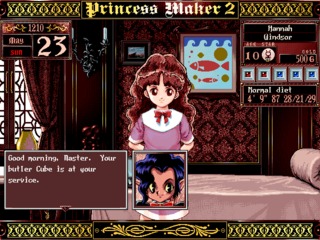Dragon Power is a classic NES game released by Bandai in 1986 and developed by Tose. Originally based on the Japanese manga and anime series Dragon Ball, the game underwent significant changes during its localization for the North American market, resulting in a unique and somewhat quirky experience.
The game follows the adventures of a young boy and his friends as they search for the mystical balls, which have been renamed “Crystal Balls” in this version. The localization changes also include renaming characters and altering some visual elements, which can make the story a bit confusing for those familiar with the original series.
In terms of gameplay, Dragon Power is a classic jRPG with a top-down perspective. Players navigate through various levels, battling enemies and collecting items. The combat system is simple, with the hero using his “Power Pole” to defeat foes. However, the game encourages players to avoid combat when possible, as enemies can be challenging.
In terms of graphics, the character sprites and environments are colorful and varied, though not particularly detailed. The sound design includes catchy, if repetitive, music and basic sound effects that complement the gameplay.
One of the main criticisms of Dragon Power is its poorly translated narrative, which can be difficult to follow. The dialogue is often awkward and stilted, detracting from the overall experience. Additionally, the game can be quite challenging, with some players finding the combat and level design frustrating. The localization of Dragon Power from its original Japanese version, Dragon Ball: Shenron no Nazo, involved several significant changes to make the game more suitable for the North American market: Goku remained Goku, but his appearance was altered to look more like a monkey with a headband. Bulma was renamed Nora. Master Roshi became Hermit, and his perverted nature was changed to a love of sandwiches. Yamcha was renamed Lancer, and so on. And as already mentioned, the Dragon Balls were renamed Crystal Balls. Also, the game cover is unrelated to the series but is similar to Karateka or Kung-Fu: The Way of the Exploding Fist. Additionally, an entire section of gameplay, specifically the World Martial Arts Tournament, was removed, reducing the game from 14 chapters to 10.
Clearly, at that time, the series was not popular in the US or Europe, and for some reason, the publisher decided to change the game to make it more appealing for the US market, while instead, the game was just made less appealing. However, if you are a Dragon Ball fan and want to try the first game ever released, now this is your chance.













